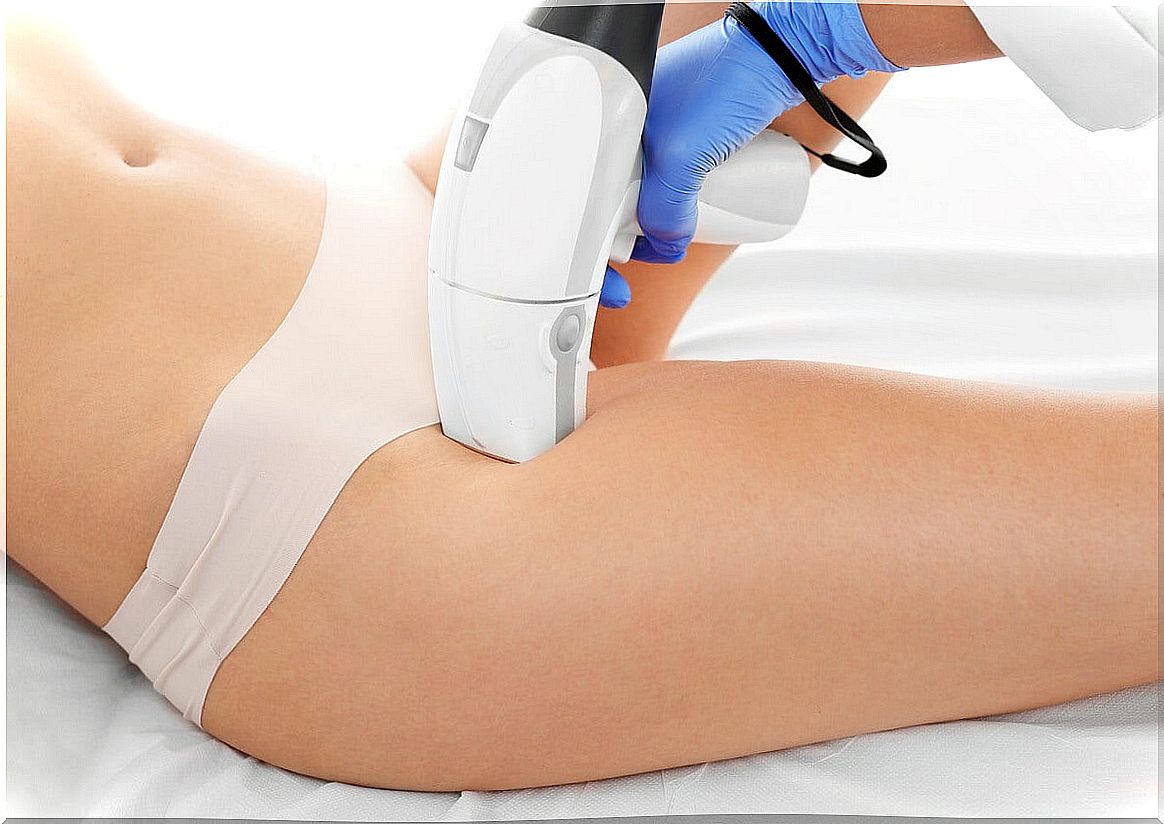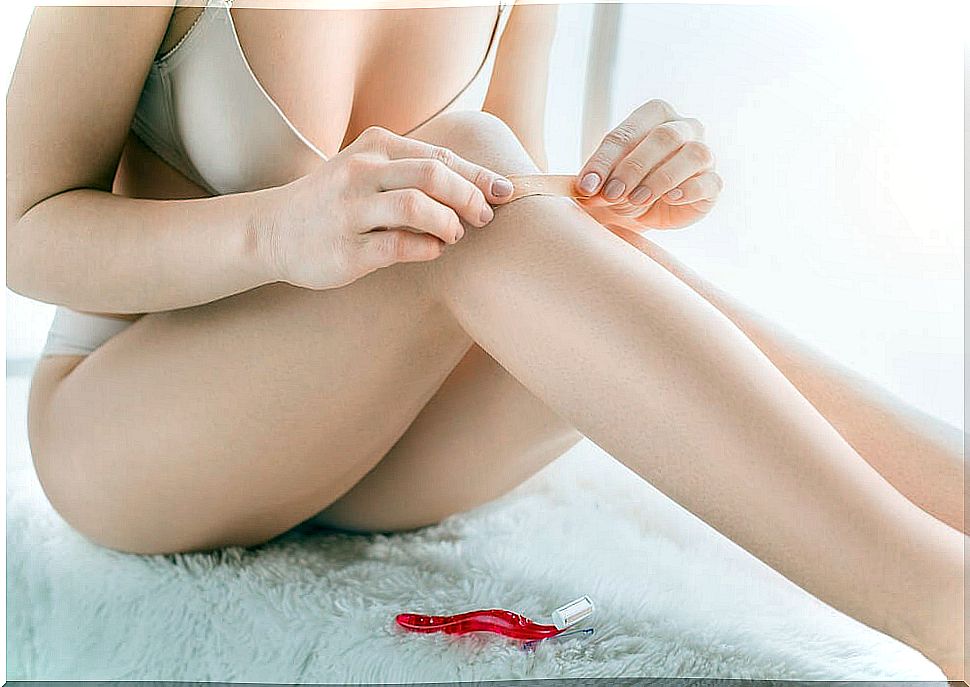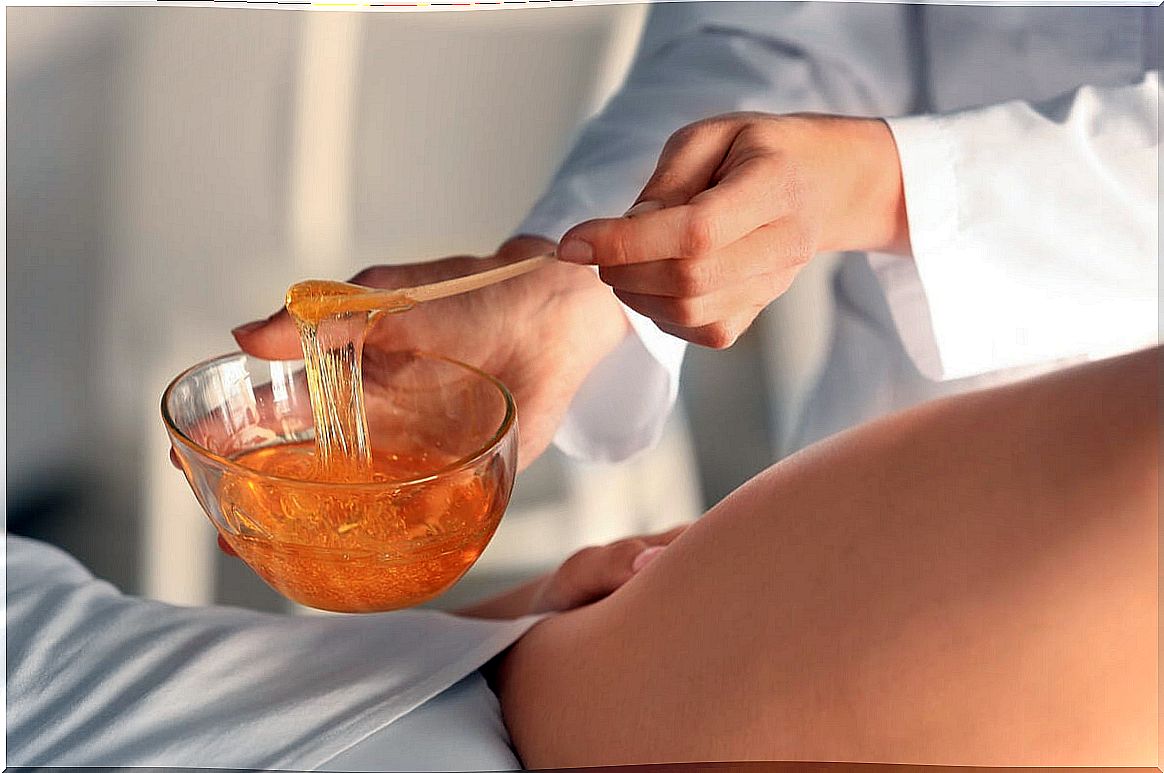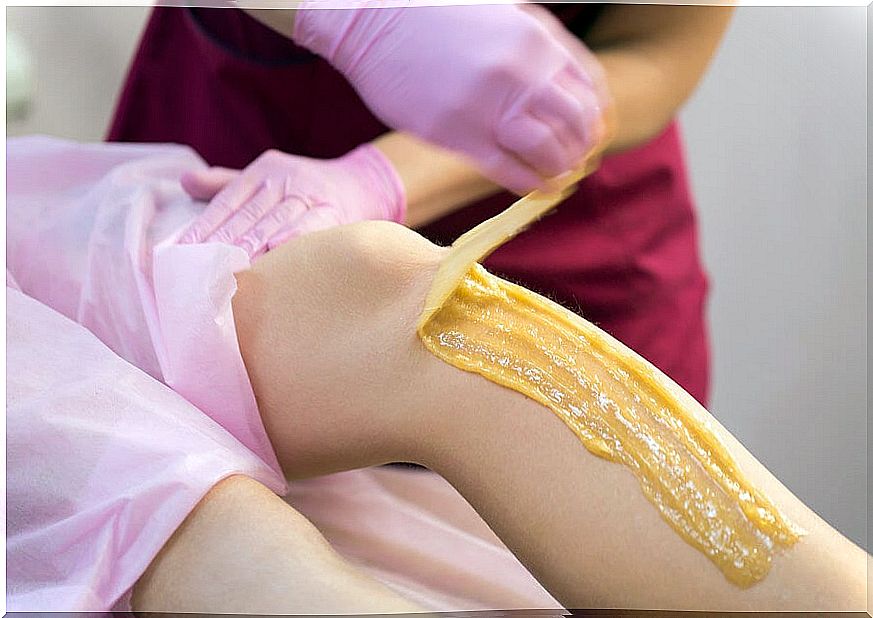Why Is My Skin Irritated After Waxing? Some Tips To Avoid It
If the skin becomes irritated after waxing, it is because the procedure is not being carried out properly, or because there is a problem that should be treated with the dermatologist.

In some people the skin is irritated after waxing and this causes a lot of discomfort. It can cause a burning or hot sensation, tenderness in the area, itching, and sometimes small red bumps appear.
Body hair, mainly in women, has been associated with the dirty and the unsightly. Today, many men are also subjected to such social pressure. However, from a medical point of view, this is unfounded.
In fact, hair removal is a factor that increases the risk of infection and other problems. Without going too far, there are many who complain because the skin is irritated after waxing. Therefore, it would be advisable to rethink the false beliefs around this practice.
Reasons for skin irritation after waxing

There are several reasons why your skin becomes irritated after waxing. It is estimated that everyone who goes to this practice frequently has experienced this problem at least once. In particular, this discomfort occurs in those who use the shaving or shaving technique. Why is this happening? The following are the main reasons.
A razor or razor in poor condition
If the razor or razor is not sharp enough, the result is excessive tension on the skin. What happens in these cases is that you must go over the area several times to make the hair come off completely.
Each of those strokes, or bumps, causes micro-abrasions. Therefore, the skin is irritated after waxing and you run the risk of these small wounds becoming infected. In this way, rashes or bumps may appear in the area.
Something similar happens when the razor or razor is dirty, with the aggravating factor that the risk of infection increases. Therefore, it is essential to clean the instrument with which you are going to wax very well, before and after using it.
The lubricant or dirty skin
Shaving or shaving requires the prior use of a lubricant, such as shaving cream or soap and water. If not used, you can see how the skin becomes irritated after waxing. Therefore, this procedure should never be done without proper wetting.
Something similar happens when the skin is dirty. During the night, or throughout the day, oil accumulates on the skin, as well as toxins and grime. Therefore, it is necessary to wash the area before waxing or shaving.
Hair texture
Curly hair is much more difficult to shave or shave. Due to its shape, it sometimes does not grow fully outward, as with straight hair. There are times when it goes backwards and begins to grow inside the skin, without breaking the surface.
The consequence of this is that the famous ingrown hairs are formed. These look like little bumps, after shaving. They are painful and can fill with pus. Sometimes they require medical intervention.
Dry skin
Dry skin is itself a problem that must be controlled. If a shaving is added to this, especially if it is frequent, the difficulty is aggravated. The common thing is that after waxing there is a red patch on the skin that causes itching. The result is poor in aesthetic terms and risky in terms of health.
Improper technique
It is appropriate to shave the hair in the same direction in which it grows. Shaving against the grain can leave your skin burning, like it’s on fire. This is because the friction is much higher and this creates stress that, incidentally, is unnecessary.
How to control itching and irritation?

If the skin becomes irritated after waxing, several methods can be used to reduce the symptoms. The most advisable thing is to use gentle treatments, in order not to aggravate the problem. Some of them are as follows.
Compresses or colloidal oatmeal bath
Cold water compresses are considered a good measure to reduce the burning and itching sensation. According to data from a scientific study, a bath with colloidal oatmeal, lasting between 10 and 15 minutes, would cleanse, soothe and hydrate the skin due to its anti-inflammatory properties.
aloe vera
Aloe vera is a product that is frequently used for skin problems, particularly for burns. Calms, reduces inflammation and helps to regenerate the tissue. You just have to apply a thin layer to the affected area.
Natural oils
There are several natural oils that may help when skin becomes irritated after waxing. A thin layer of coconut oil could be an interesting option, as this product has anti-inflammatory and antiseptic properties. On the other hand, sweet almond oil is a natural emollient and moisturizer; can be applied before or after shaving, to protect the skin.
For its part, tea tree oil is antimicrobial and anti-inflammatory. It is appropriate to mix two or three drops with coconut or almond oil and then apply to the affected area. It is recommended to place a drop on the forearm, before use, to rule out a possible allergic reaction.
Witch hazel and calendula cream
Witch hazel, or witch hazel, is a plant that is frequently used to relieve discomfort caused by burns or wounds on the skin. Also, it would reduce irritations. An infusion should be made and a few drops applied to the affected area, with a cotton ball.
On the other hand, calendula cream would also be effective in reducing inflammation and rashes, if the skin becomes irritated after waxing. Simply apply a thin layer once or twice a day.
Hydrocortisone cream
It is a topical steroid that helps reduce irritation and inflammation. They sell it without a prescription, as long as it is low in concentration. It should be used as directed by the label or under medical advice. Typically, it should be placed once or twice a day. If it causes side effects, discontinue use.
Tips to prevent it from happening

The best way to act against skin irritations caused by hair removal is to prevent them. It is enough to observe a few simple precautionary measures to avoid these discomforts. The most advisable thing is to take into account the following recommendations:
- Exfoliate the skin frequently. This removes dead cells and protects when waxing.
- Apply a lubricant before shaving.
- Apply talcum powder to damp areas. If the waxing is done in armpits, groin, mustache or chest, it is advisable to apply talcum powder to reduce humidity and facilitate the passage of the razor.
- Use the correct technique. That is, shave in the same direction as the hair grows, without forcing or pulling vigorously, and making short, smooth strokes.
- Apply a warm compress before shaving. This dilates the pores and makes the procedure easier.
- Keep the razor in good condition. This means: clean and sharp.
- Wash the skin with cold water, after shaving. It serves to close the pores and clean the area.
- Apply moisturizer. Ideally, moisturize the area with an alcohol-free cream after shaving.
- Avoid tight clothing. After waxing the groin or armpits, tight clothing should be avoided, as it can contribute to irritation.
- Change method, if irritation recurs.
See your doctor if the skin is frequently irritated
If the skin is irritated or has any abnormality, it is best to avoid shaving or waxing until the area is completely healthy. Otherwise, it can increase the problem, as well as the risk of infection.
When the skin takes on a strange appearance, or the irritation persists for a long time, it is indicated to consult with the doctor. It is also worth rethinking the beliefs around body hair: it is neither dirty, nor is it there by the whim of nature. Fashions should not put health at risk.









